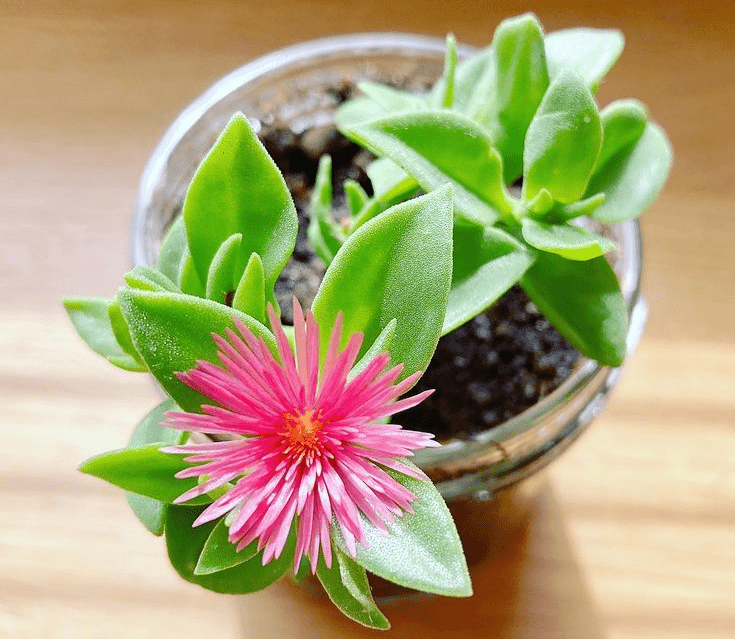Aptenia plants: How to grow and care for Aptenia succulents?

Aptenia is a genus of 4 species of perennial succulents belonging to the Aizoaceae family. The plants of this genus are native to the desert eastern coasts of South Africa. Furthermore, these succulent subshrubs have fleshy roots and trailing green stems with woody bases. They have also flat, heart-shaped, fleshy green leaves and wingless fruit capsules. Stunning flowers that may have different colorations from pale-pink to bright-red and even white are produced. Aptenia plants are widely used in gardens and can make a great groundcover because they grow very quickly. Recently, some types of Aptenia have begun to be used as houseplants.
Aptenia species
1- Aptenia cordifolia

A. cordifolia is a perennial succulent having as common names: Baby Sun Rose, Heart-leaf ice plant or Dew plant. This Aptenia species has cylindrical stems that can reach 60 cm in length and elongated, heart-shaped dark-green leaves. These leaves are edible and can be added to your salads. In spring and summer, Baby Sun Rose produces stunning, bright pink-red, daisy-like flowers which are very attractive to bees, butterflies, and other pollinators. This species is also useful as a groundcover forming a very ornamental dense mat.
2- Aptenia geniculiflora

A. geniculiflora or White-flowered Aptenia is a flowering succulent plant belonging to the Aizoaceae family. This persistent sub-shrub has tetragonal branches with subcylindrical, pale-green leaves. Aptenia geniculiflora produces white to pale yellow flowers.
3- Aptenia lancifolia

A. lancifolia, named also Lance-leaved Ice Plant or Purple Aptenia, is a perennial succulent sub-shrub that occurs in the Northern Cape. This species bears lance-shaped, fleshy green leaves and reddish-magenta flowers.
4- Aptenia haeckeliana

A. haeckeliana, called commonly Yellow Sun rose, is a succulent flowering plant native to South Africa. This Aptenia species has 4-angled stems and flat, lanceolate, olive-green to yellowish leaves. Moreover, tt produces pale yellow flowers during spring and summer. Also, this fast-growing succulent can make a great groundcover and suits well for hanging baskets.
How to grow Aptenia plants?
You can propagate Aptenia plants by planting rooted roots, stem cuttings and also by seeds sowing. Indeed, early summer is the best time to sow seeds and spring is the best time to cut stems. Always place your cuttings in light soil and water regularly to have healthy new plants.
How to care for Aptenia plants?

Light
These plants can grow in partial shade in warmer regions, but avoid full shade because flowers need full sun to flourish. Nevertheless, the plant and the flowers must be protected from direct sunlight.
Water
when you water Aptenias, they grow faster. So water when the weather is hot to improve the rapid growth. Then, if you are putting your Aptenias in a container, try to water regularly, take care not to soak the substrate, and let it dry between two waterings.
Soil
These species grow in poor desert soils and they have also the ability to thrive with few minerals. Then, Aptenias need very well-drained and sandy soil, especially not humid.
Temperature
Generally, Aptenias resist well to periods of drought. On the other hand, they are not hardy and hardly support negative temperatures. In short, the constant temperature should not drop below 20 ° C.
Fertilizer
There is no need for fertilizer because Aptenia plants grow naturally in poor soil and flower without the need for additional nutrients.
Pests and diseases
Diseases and pests rarely affect Aptenias, but, their greatest enemy is extreme cold or too much humidity in winter.
Did you find this helpful? Share it with your friends!